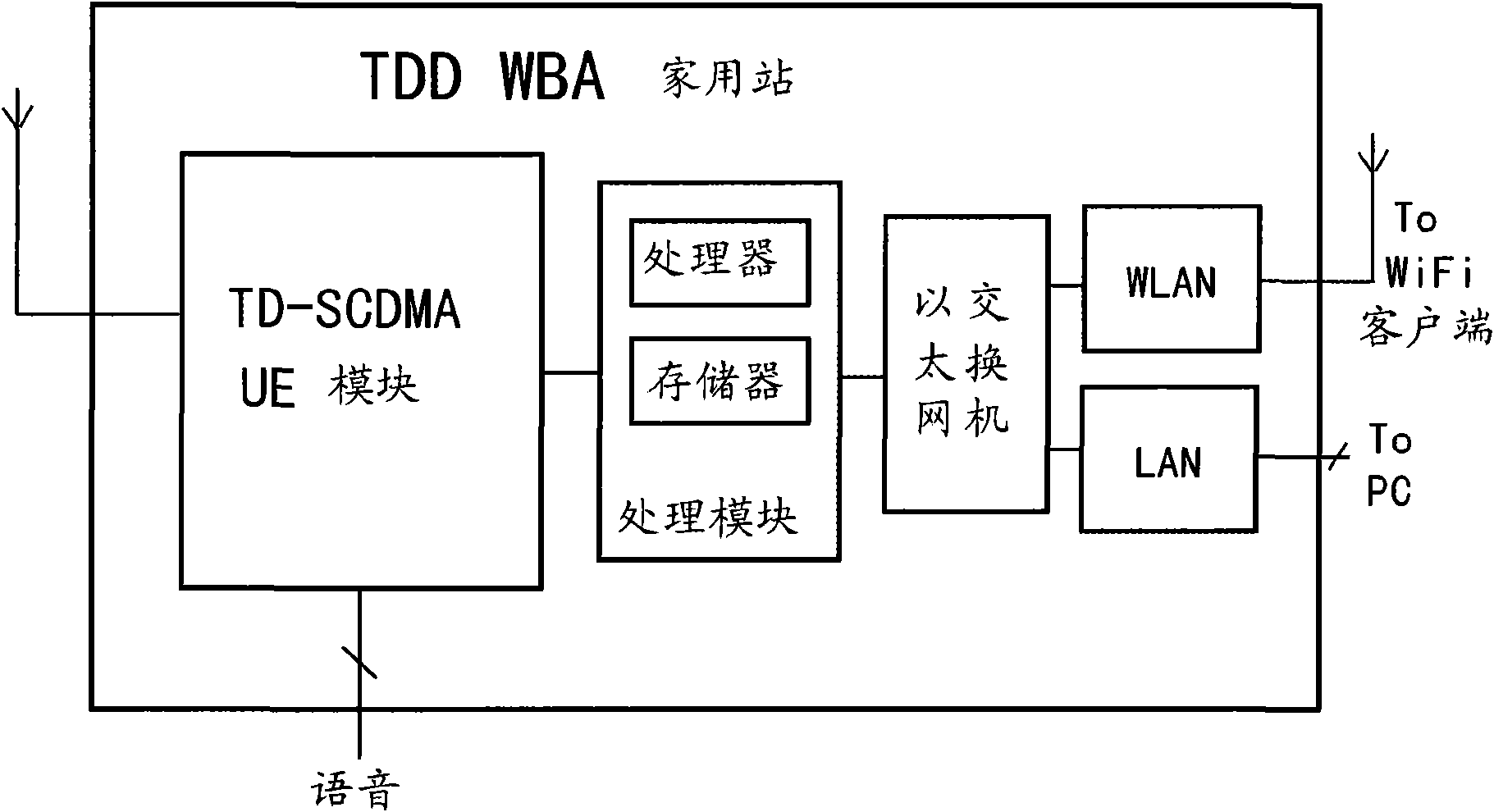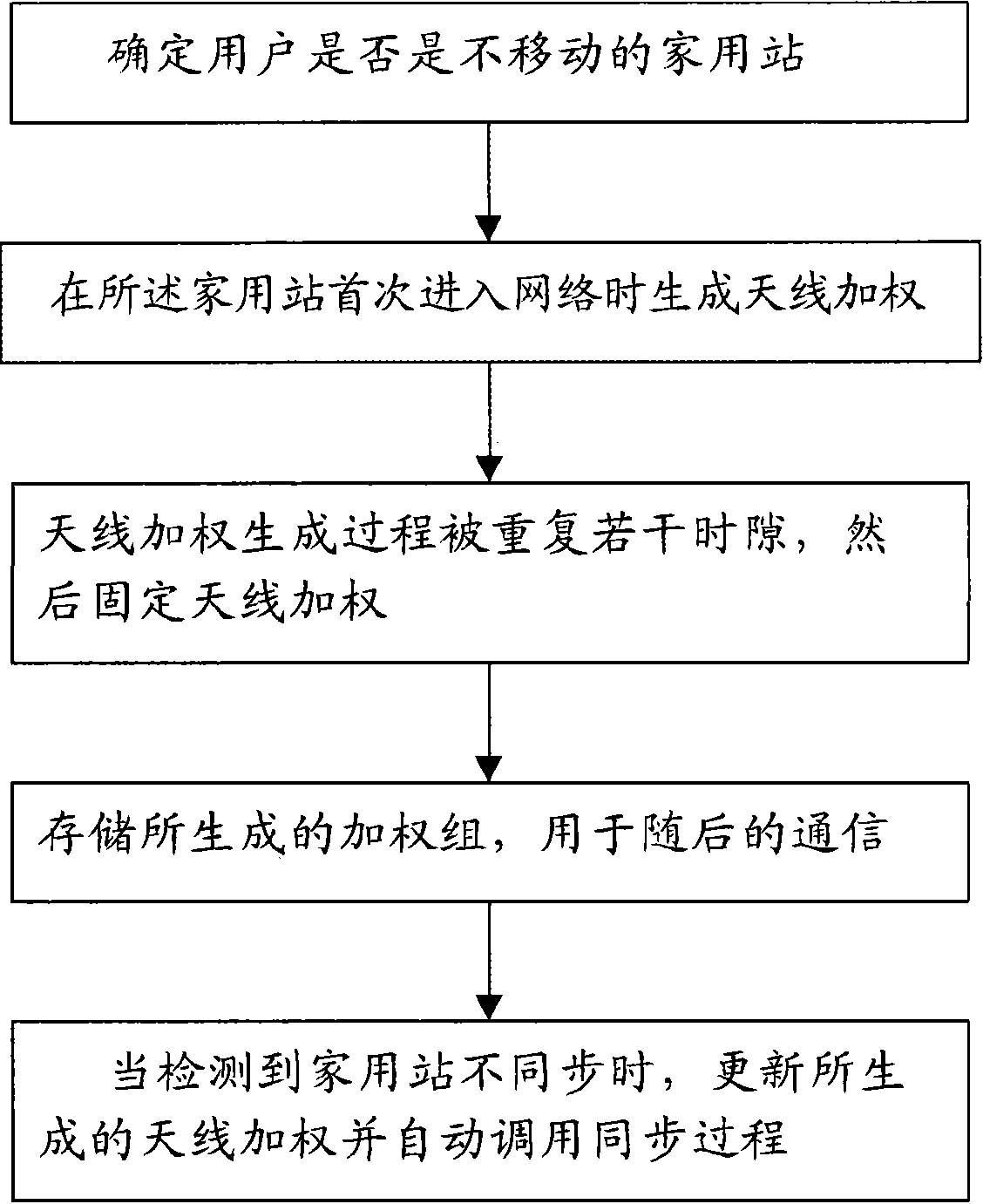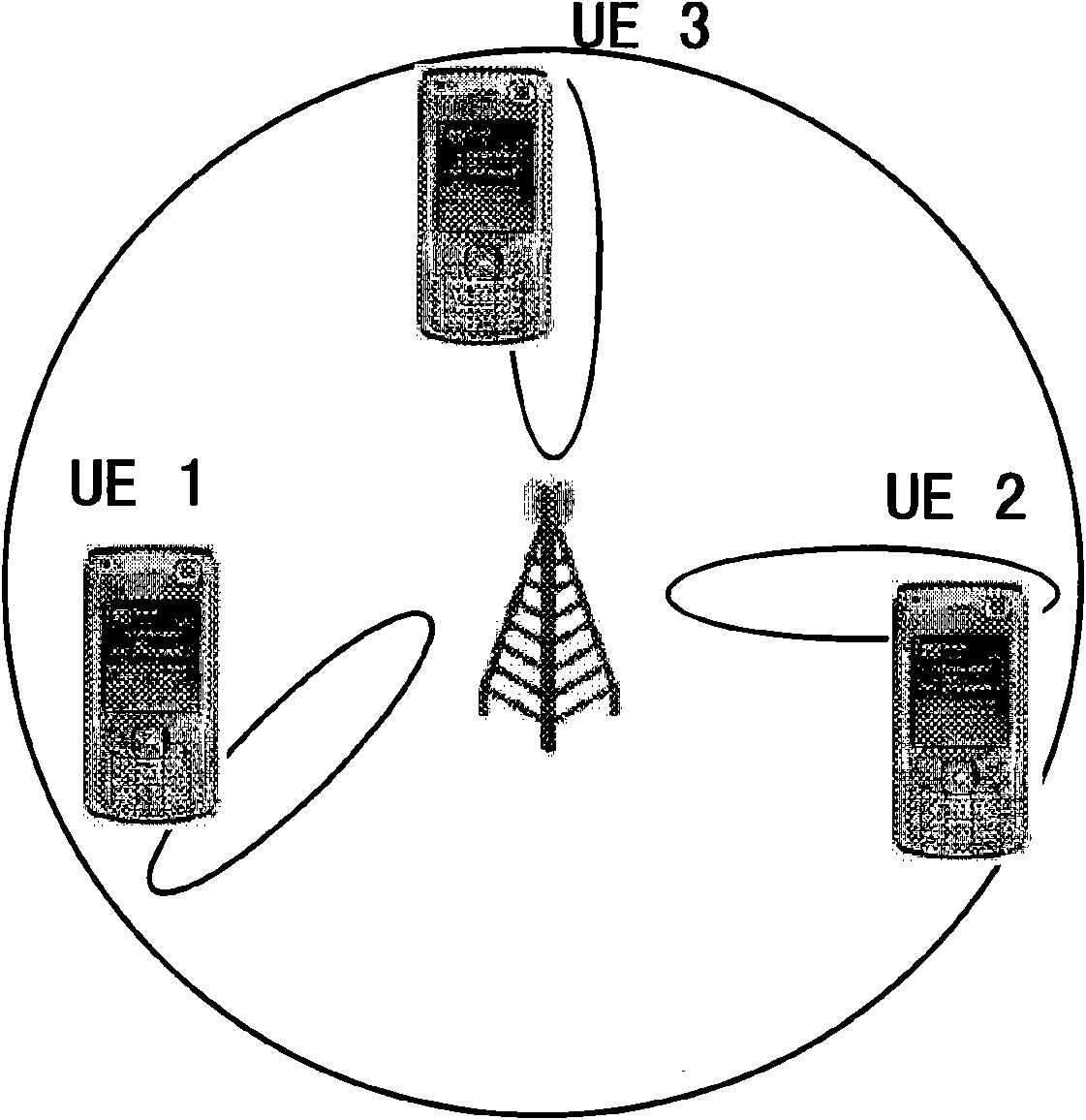Time-division duplex wireless broadband couple-in household station and family wireless couple-in method
A time division duplex, wireless broadband technology, used in wireless communication, network traffic/resource management, electrical components, etc.
- Summary
- Abstract
- Description
- Claims
- Application Information
AI Technical Summary
Problems solved by technology
Method used
Image
Examples
Embodiment Construction
[0033] The present invention proposes a new wireless solution for home Internet access. figure 1 The architecture of the home station of the present invention is shown. In this manual, TD-SCDMA air interface is taken as an example to illustrate. However, the present invention can also be used for other air interface technologies like LTE TDD, WCDMA, WiMAX etc. that can provide broadband access.
[0034] exist figure 1 Among them, TD-SCDMA (1.28Mcps TDD) is used as the backhaul for external data transmission. All data received from and transmitted to WLAN, voice and LAN is routed via the TD-SCDMA air interface. In the downlink, the Ethernet switch receives data from the network side through the TD-SCDMA user end module, and then sends the received data to the correct port according to the MAC physical address. In the uplink, the Ethernet switch forwards the data received from the WiFi access point (AP) and / or the LAN port to the network side. Through Ethernet switch, TDD W...
PUM
 Login to View More
Login to View More Abstract
Description
Claims
Application Information
 Login to View More
Login to View More - R&D
- Intellectual Property
- Life Sciences
- Materials
- Tech Scout
- Unparalleled Data Quality
- Higher Quality Content
- 60% Fewer Hallucinations
Browse by: Latest US Patents, China's latest patents, Technical Efficacy Thesaurus, Application Domain, Technology Topic, Popular Technical Reports.
© 2025 PatSnap. All rights reserved.Legal|Privacy policy|Modern Slavery Act Transparency Statement|Sitemap|About US| Contact US: help@patsnap.com



